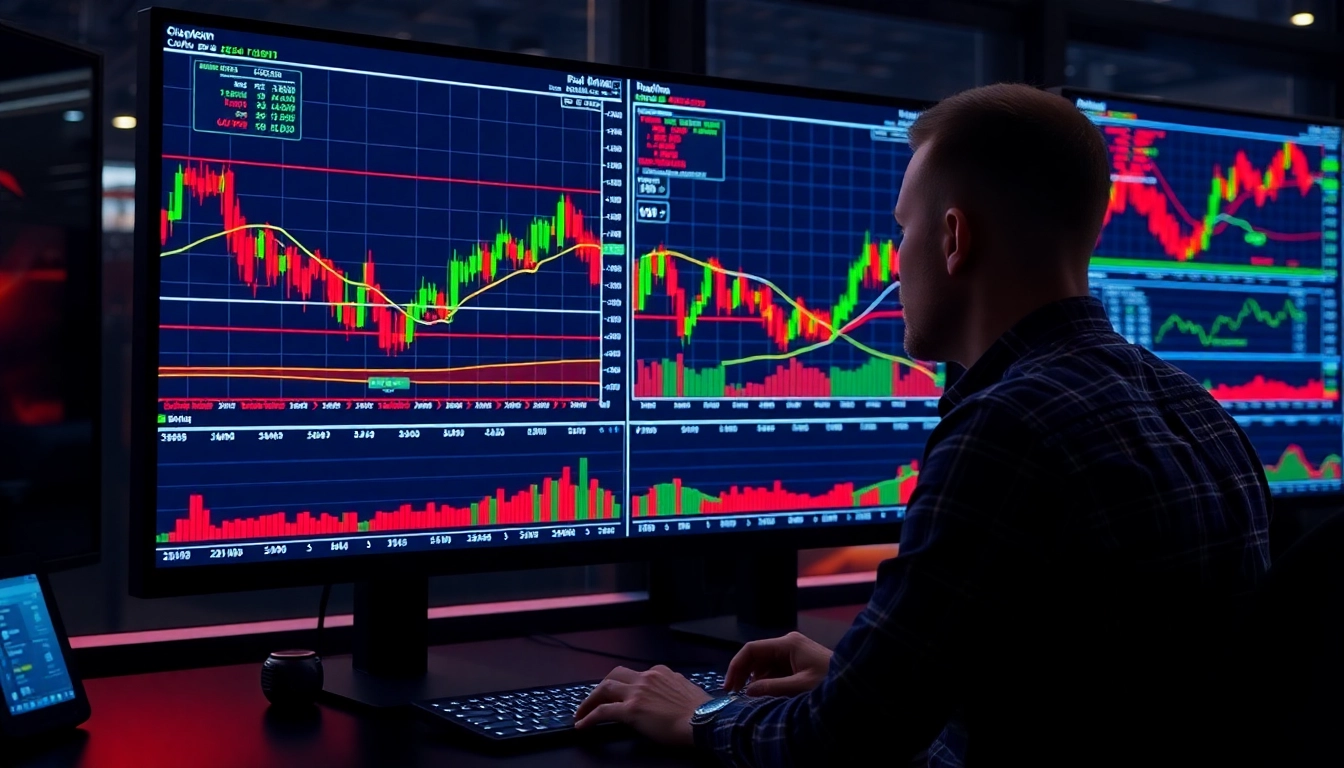Introduction to Trading View and Its Core Features
In the rapidly evolving world of financial trading and investment analysis, having access to powerful, intuitive, and comprehensive charting tools is essential. trading view has established itself as a leading platform, combining advanced charting capabilities, real-time data, and vibrant community engagement to meet the needs of both novice and experienced traders. Unlike traditional analysis software confined to specific markets or devices, Trading View offers a versatile, web-based platform accessible from anywhere, fostering a global network of traders sharing insights and strategies.
This platform excels not only in delivering instant market data but also in providing a suite of analytical tools that make complex market movements understandable. Whether you are interested in stocks, cryptocurrencies, forex, commodities, or indices, Trading View aggregates data across asset classes, enabling comprehensive market analysis in one unified interface.
Understanding Trading View as a Trading and Analysis Platform
At its core, Trading View functions as a social-driven platform, blending financial analysis with community interaction. It enables users to access a rich library of real-time charts, technical indicators, and analysis tools that are customizable to individual trading styles. The platform’s cloud-based nature ensures seamless synchronization across devices, fostering continuous workflow.
Importantly, Trading View isn’t just about charting; it embodies a social network where traders and investors can publish ideas, comment, and learn from each other. This community aspect accelerates learning, provides peer validation, and exposes traders to diverse strategies. The platform’s user-friendly interface, coupled with its powerful analytical features, makes it suitable even for beginners, while its advanced tools satisfy the needs of professional traders.
Key Tools and Charting Capabilities for Beginners
For those just starting out, Trading View offers an intuitive environment. The basic charting tools include candlestick, bar, and line charts, which lay the foundation for technical analysis. Users can customize timeframes ranging from seconds to months, providing flexibility for short-term scalping or long-term investing.
Additionally, beginners can leverage pre-built technical indicators—such as Moving Averages, RSI, Bollinger Bands, and MACD—that help identify market trends and potential reversal points. The platform also offers drawing tools like trendlines, Fibonacci retracements, and shapes, enabling users to annotate charts effectively and understand market structure visually.
How Trading View Supports Different Asset Classes
Trading View has built a comprehensive framework supporting multiple asset classes. Users can analyze and track:
- Stocks: Access a wide range of global equities, including major indices like the S&P 500, NASDAQ, and Dow Jones.
- Cryptocurrencies: Track popular coins such as Bitcoin, Ethereum, and Ripple in real-time, with dedicated charting tools tailored for crypto traders.
- Forex: Monitor major currency pairs, leverage forex-specific indicators, and plan trades in the highly liquid currency markets.
- Commodities and Futures: Analyze commodities like gold, oil, and agricultural products, along with futures contracts for diverse asset exposure.
- Indices and Bonds: Follow major indices worldwide and bond markets for macroeconomic insights.
This multi-asset support ensures that traders can diversify and manage multiple portfolios within a single platform, facilitating integrated market analysis and strategic decision-making.
Setting Up Your Trading View Profile for Optimal Use
Customizing Charts and Watchlists
A personalized experience begins with customizing charts and watchlists. Users can save chart layouts, apply preferred indicators, and set color schemes for better visibility. Watchlists are customizable lists of assets that update dynamically, enabling quick access to market movers and favorites. Organizing these tools effectively reduces analysis time and streamlines trading routines.
Integrating Alerts and Notifications
Effective trading relies on timely alerts. Trading View allows setting up alerts based on price levels, indicator crossovers, or patterns—delivering notifications via email, SMS, or in-app messages. These alerts help traders stay updated without constantly monitoring markets, particularly useful for day traders and scalpers seeking rapid entries and exits.
Leveraging Community Ideas and Social Features
One of Trading View’s standout features is its active community. Users can publish their market ideas, access others’ analyses, and participate in discussions. This collective intelligence accelerates learning and offers alternative viewpoints. Following top traders and analyzing their strategies can provide new insights, making community engagement an integral part of success on the platform.
Advanced Trading View Techniques for Effective Market Analysis
Using Technical Indicators and Drawing Tools
Advanced traders often combine multiple indicators for confirmation. For example, using RSI for momentum, MACD for trend change, and Bollinger Bands for volatility provides a multi-layered understanding. Drawing tools like Fibonacci retracements, trendlines, and channels aid in identifying support/resistance levels and pattern formations such as head and shoulders or triangles.
Performing Multi-Timeframe Analysis
Multi-timeframe analysis involves assessing a security across several time intervals. A trader might analyze the weekly chart to identify the primary trend, then zoom into daily and hourly charts to fine-tune entries and exits. Trading View’s interface makes switching seamlessly between timeframes straightforward, allowing traders to confirm signals across scales and reduce false positives.
Implementing Trading Strategies with Backtesting
Backtesting is essential for validating a trading strategy before live deployment. Trading View offers scripting with Pine Script, enabling traders to develop and test automated strategies against historical data. This process helps in optimizing parameters, identifying strengths, and minimizing risks by understanding potential drawdowns and win ratios before real-world application.
How to Maximize Trading View for Different Trading Styles
Day Trading and Scalping with Trading View
For rapid, short-term trading, traders utilize real-time alerts, quick access to multiple assets, and low-latency chart updates. Utilizing hotkeys, custom layouts, and integrated broker features can accelerate trade execution. Scalpers benefit from chart layouts focused on smaller timeframes like 1-minute or 5-minute charts, combined with overlays and volume indicators to identify micro-trends.
Long-Term Investing and Market Tracking
Long-term investors leverage Trading View to monitor macroeconomic trends, major support/resistance levels, and fundamental overlays like earnings or economic calendars. Setting alerts for key price movements ensures they can act promptly while maintaining a broad perspective on market cycles.
Automating Trading and Integrating with Brokers
Automation is increasingly accessible via Trading View’s integration with supported brokers through APIs. Traders can use Pine Script to develop trading bots or alerts that execute trades automatically based on predefined criteria. This reduces emotional trading and ensures consistent strategy implementation across volatile markets.
Measuring Success and Improving Your Market Analysis Over Time
Tracking Performance Metrics and Progress
Continuous improvement involves analyzing your trade performance through metrics such as win rate, average profit/loss, and risk-reward ratios. Trading View’s chart overlays and journal features allow traders to visualize their habits, identify strengths, and pinpoint areas needing development.
Staying Updated with New Features and Community Insights
As Trading View evolves, new tools, indicators, and community-driven content are regularly introduced. Staying updated via platform tutorials, webinars, and community ideas ensures traders maximize the platform’s capabilities. Engaging with ongoing education helps adapt strategies to changing markets.
Developing a Consistent and Data-Driven Trading Routine
Consistency is key to long-term success. Establishing a routine that includes daily market scans, review of community ideas, and performance assessments fosters disciplined trading. Incorporating data-driven decisions reduces emotional biases and enhances profitability over time.



